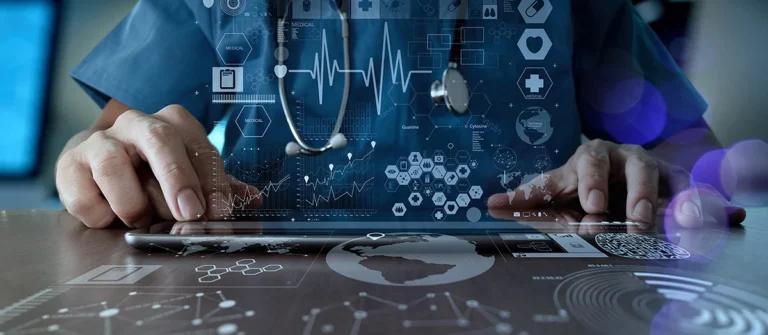The healthcare industry has faced mounting challenges in recent years, from increasing patient demands to complex administrative burdens. Thankfully, automation is revolutionizing healthcare operations, making processes more efficient, precise, and scalable. From scheduling appointments to managing patient records and streamlining clinical workflows, automation not only saves time but also enhances the overall quality of care.
This blog will cover key areas where automation is making a significant impact in healthcare operations, with examples of how these advancements translate into tangible benefits for providers and patients alike.
The Role of Automation in Modern Healthcare
Automation in healthcare involves the use of technology to perform tasks with minimal human intervention, ranging from administrative duties to clinical decision-making. This is powered by tools such as artificial intelligence (AI), machine learning (ML), and software solutions tailored for healthcare providers.
Why Automation Matters in Healthcare
- Growing Patient Volumes: An aging population and increased healthcare access require providers to care for more patients while maintaining high standards.
- Administrative Load: Studies show that clinical staff spends up to 34% of their day on documentation, often detracting from direct patient care.
- Rising Costs: Automation can help reduce operational expenses by increasing efficiency and reducing errors.
Automation tackles these challenges head-on, improving productivity while freeing up human staff to focus on high-value tasks like patient interaction and clinical decision-making.
Key Areas Where Automation Enhances Efficiency
1. Appointment Scheduling and Patient Communication
Manually scheduling appointments is time-consuming and prone to errors, leading to double bookings and missed opportunities. Automated systems can streamline this process.
- Automated Appointment Reminders: Text or email reminders reduce no-shows by up to 38%. Patients receive timely notifications, making rescheduling more manageable.
- Self-scheduling Portals: Patients can book or adjust visits at their convenience, without needing to call a front desk. This improves patient satisfaction while lightening staff workload.
2. Streamlining Administrative Work
Hospitals and clinics generate massive amounts of paperwork—from patient intake forms to billing and insurance claims. Automation tools simplify these processes.
- Electronic Health Records (EHRs): Centralizing patient data ensures that providers can access medical histories instantly. Some systems integrate automation features, such as templates for charting patient encounters or billing codes. For instance, a urology EHR platform offers automation tailored to the specific needs of urologists, improving accuracy and reducing time spent on manual entry.
- Medical Billing Automation: By automating claims submission and follow-ups, practices can decrease denial rates while ensuring faster payments.
3. Improving Clinical Workflows
Beyond administrative functions, automation optimizes workflows within treatment settings.
- Lab Results and Diagnostics
AI-powered diagnostic tools flag abnormalities in radiology scans or lab results faster than manual interpretation—reducing diagnosis times and enabling faster interventions.
- Medication Management
Automated systems help hospitals manage medication inventories, ensuring the right drugs are always available when needed. Alerts flag errors like potential drug interactions during prescription processing, improving patient safety.
4. Enhancing Supply Chain Operations
Efficient supply chain operations are critical for ensuring that healthcare providers have the tools and resources they need to deliver care.
- Inventory Management
Automated tools track usage trends and predict demand, helping hospitals reorder supplies before critical shortages occur.
- Smart RFID Systems
Radio-frequency identification (RFID) tags embedded in medical equipment allow real-time tracking, reducing the time staff spends locating devices and ensuring proper maintenance.
5. Data Analytics and Reporting
Automation collects and analyzes data faster, yielding insights healthcare professionals may not have time to uncover manually.
- Population Health Insights
Tracking health trends in real-time aids public health initiatives and proactive care delivery. For example, data might reveal increased rates of a specific illness, helping allocate resources more effectively.
- Compliance Reporting
Automated compliance tools ensure healthcare providers meet regulatory standards by generating necessary reports and identifying areas of non-compliance early on.
Benefits for Patients and Providers
Automation doesn’t just make healthcare providers’ lives easier—it also significantly benefits patients.
For Providers
- Reduced operating costs and enhanced efficiency
- Improved accuracy, leading to fewer administrative errors
- Greater employee satisfaction as staff can focus on meaningful, patient-centered tasks
For Patients
- Quicker and more accurate diagnoses
- Reduced waiting times and improved care delivery
- Convenient tools for scheduling and accessing medical records
Challenges and Solutions
Despite its benefits, automation also presents challenges. For example, integrating new systems with existing infrastructure or training staff may intersect with operational downtime. Addressing these concerns requires strategies like phased rollouts, robust training programs, and selecting scalable solutions that can adapt to a provider’s needs.
Furthermore, security concerns need robust answers. Automated systems carry data protection risks since they rely heavily on storing sensitive patient information. Employing features like encryption, secure access controls, and compliance-focused cloud storage resolves many of these concerns.
Automation is the Future of Healthcare
Automation is transforming the healthcare industry by streamlining operations, saving costs, and improving patient outcomes. However, implementing this technology requires healthcare providers to strategically invest in systems tailored to their unique needs.
If you’re ready to explore automation tools that can enhance your healthcare practice’s efficiency and patient care, consider starting with solutions like automated appointment scheduling or EHR platforms tailored to your specialty. The benefits, both short-term and long-term, far outweigh the investment required.
With the increasing complexity of healthcare demands, now is the right time to adopt automation and future-proof your operations. By doing so, you’re empowering your team to focus on what really matters—providing exceptional care.

